
by MIMO Solutions | goals, sales, social media, social media marketing, Social Networking
 |
| Social Networking For Salespeople – Pros and Cons |
We have all seen the good, the bad, and the ugly of salespeople in real life, but what about on social networking sites? Do you and your salespeople look more like the top picture or the bottom one?
Take a minute and consider the pros and cons of social networking for salespeople and see if it is worth investing your precious time, money and resources into before you jump in head first.
Pros
|
Cons
|
- You can interact with your target audience.
- It is easier to give and get referrals and reccomendations.
- You can generate leads for yourself.
- You can use it as a CRM to keep track of contacts.
- You can improve your credibility and reputation.
- You can improve your search engine rankings and brand recognition.
- You can monitor what people are saying about you.
- You can keep up with industry trends, experts and vendors, and the competition.
- There is a low hard cost of using social media.
- Most people do it wrong.
|
- It is hard to keep up with all the changes in social media.
- You might get negative feedback.
- You might look unprofessional.
- You might waste too much time.
- You will need computer skills.
- People will try to sell you.
- It has a lot of soft costs like time, energy and resources.
- Everything is public and lasts forever on the Internet.
- Requires some new thinking and strategies.
- Most people do it wrong.
|
The deciding factor is “Most salespeople are using social networking completely or at best mostly wrong.”
If you are considering getting more involved or investing more energy and resources into social networking as a business or salesperson, please consider this factor heavily and commit yourself to either be a professional or generally stay out social networking and cut your losses.
The fact that most salespeople are doing it wrong can be a pro or a con. If you can take the time and energy to learn how to do it right, then you can easily crush your competition on social networks, because they are doing it wrong. If you can’t or don’t want to do it right, then you are probably wasting your time. This single factor will negate most of the cons and maximize most of the pros for social networking.
 |
| Social Media For Salespeople |
Social networking for salespeople, when done right, can be a powerful new tool to connect you with qualified leads and referrals that you would have otherwise missed.
Look at the cons list again for a second. If you really decided to dive in head first and get good at social networking, how many of those would still bother you?
You could… keep up with changes, handle negative feedback and win over a customers, look more professional than your competitors, deal with the spam and other bad salespeople, learn the computer skills necessary, handle the soft costs because they are resulting in revenue, learn the privacy policies and how to post professionally thing to want to last forever, gain the knowledge and skills necessary to communicate your sales message over social networking sites, and finally, you could dominate anyone who was not willing to invest the same energy to do all that.
One more thing… There is no magic bullet in sales or social networking!
If you haven’t noticed by now, social networking will never be a magic bullet that gives you all the leads and sales you can handle with little or no effort on your part. Building a book of business through social networking is no different than doing so in the real world. It takes longer than you want, it requires commitment and a strong desire to succeed eventually, and finding qualified buyers is still like herding cats.
However, for salespeople social networking does have it’s advantages compared to the real world. It is more easily monitored and tracked. Most salespeople are not that organized to begin with and these tools help. You can reach a lot more people in a shorter amount of time. You can send the same message to multiple people or groups. You can prospect around the world instead of just your town or hopping on a plane.
Finally, once you do the hard work of building your social network, it is harder for it to come crashing down. In general, even if a competitor decides to get serious about social networking, they are going to be way behind you and you can use your established network to continue your momentum. If you change jobs, you can bring your social networking with you much easier than real life.
Overall, social networking for salespeople is a very powerful tool, but it is not a magic bullet. Understand that, and you can make the right call.

by MIMO Solutions | communication skills, marketing, sales, social media, Social Networking, tips
 |
| Responding On Social Media |
Bonding & Rapport through Social Networking is one of the most powerful tools your company has to increase sales, second only to interpersonal communication in real life.
Let’s start with some basic Netiquette:
- Always respond on the media you were contacted, unless asked or requires private information.
(If you get a Tweet, send a tweet. Don’t call immediately or send an email if someone commented on Facebook. They will ask, if they want a call or better yet call you first.)
- There is no context for your words, so be respectful and be careful.
(No sarcasm or innuendo. Humor is powerful on the Internet, but make sure it is straight forward and lighthearted. When in doubt, make it blatantly obvious by just adding “Ha!”)
- Only use shorthand that the other person has used previously.
(LOL, JK, & BRB is not universal.)
- Don’t respond when you wouldn’t call though.
(If someone comments at 3pm, don’t reply after midnight. They won’t see the message, and things like text message may beep on their phone and wake them up.)
- Keep private stuff private.
(Obviously, things like credit cards and private information shouldn’t be shared online, but if you need to talk about sensitive issues, it is best to send a message on the media they contacted to that it will require a private conversation and let them know when you will call.)
- Stay cool while waiting for a response.
(Everyone has their own speed on the Internet. Some people check email and LinkedIn messages 15 times a day, others once a week, so be patient when waiting for that reply.)
- Never use social media or email to cancel plans or send urgent messages.
(Actual conversation is required for canceling a meeting or communicating an urgent message. No one wants to get back from being stood up to find an email saying something came up. Calling is best, but Instant Message, or text may be acceptable if they respond immediately.)
- Use the same picture (of your face) on all public profiles. Complete your profiles and keep them up to date. If you can’t keep up, shut them down.
(The same picture allows people to see they have the correct person, plus people want to socialize with people, not brands, robots or question marks. Sorry, no pics of your kids as the profile picture either. Who wants to do business with a 2 year old? Also, no dead profiles. If you don’t check them regularly delete them. You don’t want to find out later that you missed a big sale because someone sent you a message on MySpace. Oops.)
- NEVER USE ALL CAPS!!!
(That is considered yelling on the Internet and no one likes to be yelled at.)
- Respond quickly, but thoroughly to every message and comment. Do it right the first time.
(Even if it is just to say “thanks,” make sure you get the last word or the conversation is clearly over. There is a regular give and take on the Internet because we can’t see each other, so communication works best when it alternates back and forth. Multiple messages in a row from you is confusing because the often receive them in reverse order, plus the don’t know when you are done. Send one thorough and complete response to each message your receive, then be patient.)
Do not tag me in photos that I am not in to get me to look at them. This little game does not ingratiate you to me, it makes me hate you. All I do all day is look for photos of myself on the Internet, and when I am pic-teased, I get super-angry about it. Do not be a pic-tease. – Comedian, Nick Kroll
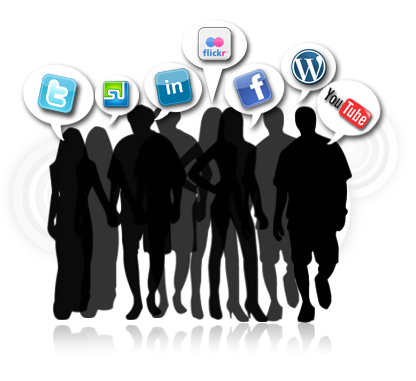 |
Responding to Customers on
Social Networking Sites |
Now some more advanced techniques for communicating on social networks…
Those were sort of my Top 10 Netiquette Commandments, they provide a nice framework to keep you out of trouble, but they really don’t help you much along the lines of build trust and business relationships that result in more sales. In order to do that, you are going to have to learn some more advanced ideas about interpersonal communications between human beings.
The number 1 thing you need to know about human beings is this: We all pretty much do whatever the easiest thing is to eliminate the most pain or create the most pleasure in our lives. In short, we do what we think is best.
In a scientific study, they found that 99% of people are generally doing this. There are about 1% who hate themselves and are self-sabotaging, but let’s go ahead and assume we don’t want them as clients. Let me explain more.
When you wake up in the morning, you never think to yourself, “Let me see how stupid I can look today. I wondering if I can do something really embarrassing, and cost myself a ton of business.” Yet those things happen sometimes, if not to us, we see it happen to others all the time. Have you ever seen someone with a tattoo on their face? Chances are they didn’t think… “I want to scare small children and make sure I never get hired in corporate America.” They probably thought it was cool, tough or maybe intimidating, and it would eliminate future pain or get them future pleasure.
So what does that have to do with responding to customers on social networking?
Well, this basic principle of psychology and communications, means a great deal to all of us. It means there is a big problem with how you communicate online, and a clue about how to fix it. It also means that there is a tremendous opportunity to stand out from the competition, because they already think they are doing their best, given the circumstances and resources.
Here is the problem. Every person on the planet is different and will evaluate what is best from a different set of circumstances. You are going to do what you think is best, but what if it is not best for the other person? Think about the “golden rule.” Treat others the way you want to be treated. There is a problem with that. What if they don’t want to be treated like you?
Here is the solution. Treat each person the way they want to be treated. This is especially true on the Internet. Each person has their own skill level of computing, internet speed, knowledge from research, social networking preferences, communication habits, as well as all the other personality and experience differences that go along with real life. That means each of your prospects or customers need to be dealt with the way they want to be, especially in how you respond online.
Here is an example. Let’s say you post your email address on your contact page, because you can formulate your responses, take time to respond at your convenience, you are a fast typer, and you can copy multiple departments if you have to. Sounds reasonable that everyone has email these days, and they can comply with this if they have a question.
However, what if prospect is an 80 year-old woman, who can’t type well, has an emergency, and she is looking up your number at a local library? Does your solution make the most sense for her?
The best way to communication through social networks is the way that your clients are communicating with you.
In order to do this effectively, you must treat each person as an individual and set up the social networks, online advertising, and response strategies for each. It sounds more complicated than it actually is, but the key is creating lots of options and then using the right tool to unlock the right door to the right customer. It is your responsibility to create an open communication channel with your clients. It is not theirs. Take some time now to think about how you can apply this concept to the way you currently communicate online.
This principle applies to much more than just the communication channel, so we will discuss this more in the future. In the meantime, keep putting yourself in your customer’s shoes, and focusing on how they want to be treated.

by MIMO Solutions | Internet Marketing, Social Media Explained, Social Networking
Here is everything you need to know about Facebook if you are running a small business:
Facebook is the king of social networks. I am getting annoyed with articles and videos that tout the number of people on Facebook, so I am just going to assume you have heard of it and you know it is a big deal. Facebook is all about the “like.” If you “like” a person, you become friends with them. If you “like” a business, you will follow them and get their updates. If you “like” a post, picture, website, product, update, story, or anything else, then it will tell all your friends that you like it. There is NOT a “dislike” button on Facebook, so the key to being successful is being
Likeable.
For small businesses, there are a few things you need to know. First, if you don’t have a plan for dealing with Facebook, you are missing out on a chance to connect with potential clients. Second, hardly any small business actually do have a plan of attack for Facebook, so it’s not too late. Finally, on Facebook there is a very fine line between the business and personal aspects of the site, so it is best to draw a hard line for yourself and your employees.
Here are the advantages of using Facebook compared to other social networks:
- Your audience is on Facebook, because pretty much everyone is.
- Facebook can target users much more effectively than other forms of advertising because it has so much information about its members.
- Being “liked” is a really good way to generate referrals, reviews and recommendations from your customers. Facebook shows people when one or more of their friends like something. This is called “social context.”
- Facebook is generally a long-term relationship with your customers, so when someone likes you, they will see your updates for as long as you are connected, which is until they un-like you.
- There are many applications, tools, and features on Facebook to help you connect and take advantage of the relationships.
- You can easily share links to your website, photos, videos, and other information with your fans.
- Since recently going public, Facebook is attempting to become very business friendly add dashboards, stats and extra advertising opportunities to help you reach new customers, engage current ones, and track how many people see and interact with your posts and pages.
- Those stats help because with so many people and so many updates every second around the web, it is hard to even tell if people see your update in their news feed. Typically, posts stay relevant for about 24 hours, but Facebook tracks them for 3 days.
 Getting started on Facebook for small businesses:
Getting started on Facebook for small businesses:
- The most important thing to do is separating your personal and business life by creating a business page. Do this as soon as possible. Chances are that you have already received friend requests from clients, prospects, referral partners, and people trying to sell you stuff. Help mitigate that keep your personal information and posts personal, by setting up a business page.
- If you scroll to the very bottom of the Facebook website you will see a link to “Create A Page.” If you visit a business’ fan page, you will also see the link in the upper right of the page. Click it and begin filling out the profile just like you did for yourself. Make sure you select the correct type of page, because the features differ for celebrities or topics and local businesses.
- Work on completing as much of the profile and information as possible. Be sure to include your address, phone, and website. Upload lot of pictures, any videos you have, and share links to your blog and any other websites you have.
- Use the Admin panel at the top of your page to monitor your progress and invite your contacts to like your new page. You can only invite your Facebook friends at this point, but that is OK, just click invite to send a message to anyone you think that would be interested. This is also where you will see notices about new people who liked you, and any comments on your posts.
- Click on “Build An Audience” to start promoting you page. Invite friends and email contacts, and don’t forget to share it on your own personal wall. Those are free, but you can also create a Facebook ad to promote this page to people you are not connected with.
- There are two types of ads on Facebook that you need to know about: Page Ads and Promoted Posts. Basically, you can just advertise for people to visit and like you page, or you can advertise one of your status update posts to have it appear in more people’s news feeds. I have seen both work very well, but I would not run a Promoted Post unless you have a really good post. If you post about an upcoming event, contest, coupon, or really great article, then go for it. If it is just an average here-is-something-we-did post, then you will see better results from the generic Page Ad.
- Start by using the regular Page Ads to start building your audience. These are just pay-per-click ads that promote your page to anyone on Facebook. The targeting options are very cool, so make sure you set them very specific for your target market. You will need to start here because the next two options work better when you already have people liking your page. I would recommend running this basic add until you have about 500 fans, and then switch to the next two.
- Promoted Posts need to be set up immediately after posting. This advertising option is only available for 3 days after your original post so plan ahead. Compose your really great offer or post and submit it, then immediately click create an ad at the top of the page and choose the post as your advertisement. Select the demographics and budget and you are on your way.
- Use Page Ads with social context to build the number of likes for you business. This campaign I recommend running continuously with at least a small budget. It is called the “Friends of Fans” option. This ad will only appear to people who are friends with someone else who has liked your page. This is a great option because the price is lower on the smaller audience, plus people who like you are more likely to know someone else who needs your company. Another benefit is that those friends who see the ad will get a bonus recommendation from the friend who likes you, it is like an automatic referral. Again, this is called “social context” because when someone sees your ad, the also see a social friend who likes the company and it puts it into context for them.
- Create a calendar around how often and what you post to your business page. Most people struggle with what to post on their business page, but if you plan ahead and create a regular calendar for updates you will get the hang of it. You can post product announcements, new hires, press releases, industry articles, recommended books, testimonials, quotes or thoughts of the day, and all kinds of things depending on what you think your audience would like to see. The important part is to post on a regular basis so people know what to expect. Shoot for at least once per day, and up to 3 times. Don’t go over that unless you have fanatics and very large audience who need information more than that.
- Use the 80-20 rule for posting advertising and marketing messages. No one likes to be bombarded with ads, but it is OK to ask for the order ever once in a while. Facebook is a social network, so think about it like a business networking event. No one would talk to the guy who just walked around saying, “Buy from me!” the whole time. About 80% of your posts should be interesting information that people would “like,” and the other 20% of the time try to make an offer or call-to-action that people would share with their friends or would “like” to receive.
When developing your marketing plan for Facebook, think about what people “like.”
Remember, there is no “dislike” button so controversial topics or negative posts about something don’t work very well. Have you ever seen someone share bad news like their dog passed away, and people click “like” on the post? It doesn’t make any sense… Think about what information and messages would cause someone to say, “Hey, I like that!” They also would need to want their friends to know that they liked it, so keep that in mind as well.
How can you be likable and take advantage of being liked? That is the key question you need to answer before beginning a business campaign on Facebook.
Finally, I began by mentioning that you want to separate your business and personal accounts. I would encourage all business contacts to like your page, and not add them as a “friend.” Some people hate hitting the ignore button and not adding someone, but it is truly what is best for your business. Ask yourself if you really want this person to see updates from your mom or pictures of your kids. Your personal friends are going to share a lot of information and tag you in pictures that are not business related. I find it best to clearly define who is a “friend” and who is a business associate.
Not all people have taken this approach yet, but I think in the near future, you are going to see a lot of issues and un-friending of business contacts. With the massive amount of people on Facebook, less is more when it comes to friends. Anyone can follow your business page, and they will only see your business updates, but be choosy about who you let see your entire personal life. And how much time you spend on Angry Birds or Farmville…
If you need help setting up your business Facebook Page, just shoot me an email and I will help.
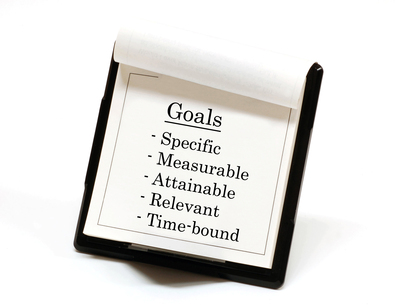
by MIMO Solutions | behavior, goals, marketing, sales, social media marketing, Social Networking, tips
 |
| How to set goals for your social networking behavior, results and target markets. |
Getting Started With Goal Setting
Before you start setting goals for your social networking activity and results. There are a few things you need to know about goal setting in general.
- Just the act of setting SMART goals increases your chance of success by 10 times.
- Written goals increase that likelihood even more.
- Sharing your goals with your team, family or accountability partner again increases your chance of success!
- You can only manage what you can control. Setting goals for other people’s behavior is futile.
Studies show that only about 50% of people have goals in general, only 10% have written goals, and only about 1% have a plan to achieve them and share them with an accountability partner. Those people who do all three are exponentially more likely to achieve their goals than those winging it.
I hope that doesn’t come as a shock to you. If you wanted to take a road trip, you might want to decide where you are going, get directions, and tell someone else where you are going. Chances are you would get there safely. If you just took off one morning with no goal or plan and didn’t tell anyone, you might end up lost forever.
Most importantly, you can only manage what you can control. You have probably heard about SMART goals before, but you may not have considered this. Setting goals for result, especially those that depend on the action of others is generally not helpful. They are nice to have in mind, and important for determining your behavior, but they alone will not lead you to success.
Let’s use an example. If you set a goal to get 100 likes on your Facebook business page, it sounds like a good goal. However, it tells you nothing about how to actually achieve it and what actions to take. Even worse, it depends on other people to take the action by clicking “like.” You can’t force anyone to do that, so your goal is out of your control.
If that is the result we want, there are still goals we can set. The just need to be SMART goals which we can manage and control.
Smart Goals are:
- Specific
- Measurable
- Attainable / Achievable
- Relevant / Realistic
- Time-Bound
Specific leads us to the exact location we want to be on our road trip. Measurable and attainable tell us that we need to be able to track our progress, and it needs to be a behavior we can control. It is hard to measure unspecific feelings, or generalities like “be more successful,” “be well-liked in the community.” or even “get more leads.” How can you tell if you are making progress or even achieved “being successful”?
Relevant or Realistic is also very important. If you goal seams impossible, it is unlikely that anyone will go after it. Great goals inspire action. It needs to be relevant to the outcome you want and realistic so you believe you can achieve it with the right actions.
Finally, goals need to be time-bound to drive you to action and inspire you to achieve them. This can be done in to way. By simply adding a date that it is to be completed, or by adding how often you need to take the action. Let’s try some examples for social media.
Setting SMART Goals for your Social Networking activity
There are three categories that you will need goals for in your social networking activity. You will probably want to plan and track your progress toward what you need to be doing, who you want to reach, and the end results for your business. In other words your behavior, targets and results.
Behaviors
- Post status updates on Facebook three times per day, morning, noon and night.
- Write one call-to-action message, one original thought or blog, and re-share some interesting post about my industry on Facebook to fulfill my 3 post per day on Facebook.
- Send 5 Tweets per day, 3 Re-tweets of interesting posts, 1 original thought, and 1 call-to-action.
- Post one interesting article, either mine or someone else’s on Linked In.
- Share a link to an interesting article or +1 a website on Google+ once a day.
- Write one original blog about an industry hot topic per week.
- Send and informative email blast to my clients and prospects once per week that contains my new blog post, a call-to-action, and links to my social networking accounts.
Targets
- Respond to every email, direct message, or comment received within 24 hours.
- Add any new connections or business contacts I have made to my email lists each week.
- Find 1 new interesting industry expert to follow on Twitter every week.
- Add any new requests or suggested family, friends and personal connections on Facebook who I would like to talk to in the real world, each week.
- Add any suggested connections on LinkedIn who I have met in person or done business with in the last year, or I know well enough that they would take my call.
- Add suggested connections to appropriate Circles on Google+ each week, if they are someone I would like to keep in touch with.
- Update my list of the top 10 potential clients I am targeting weekly, and make at least one attempt to contact them or share an interesting article with them.
- Make contact by phone or email with at least 5 of my top 20 referral partners or strategic alliances.
- Clean out my contact lists every quarter, and remove anyone I no longer want to be associated with or have not interacted with in over a year.
Results
- Schedule 1 meeting per work day with a referral partner.
- Schedule 1 meeting per work day with a potential client.
- Follow up on all leads generated through my calls-to-action on the social networks and email blast.
- Ask for referrals, reviews or recommendations from every new client.
- Thank referral partner with an appropriate reward for each referral that becomes a client, and explain why if the referral did work out.
- Review my Google Analytics, Facebook page dashboard, and any other reports monthly, and make notes on what generated the best response and track my progress.
There are many other goals you could set, but these are some of my favorites, because they are all things that you can control and do on a daily, weekly, or monthly basis. It is very hard and frustrating to only monitor results because they can fluctuate on thing outside your control. Plus, if you try to manage results, you are managing in the past. Typically, the results you are getting now are based on your activity from one to 3 months ago. In longer selling cycles, it could even be that the sales you get this month are a result of networking or referrals from over a year ago.
Feel free to use any of my goals above, or discuss some more appropriate goals for your organization. The ones listed above could actually be mores specific, but I wanted them to apply to more people. For example, “follow an interesting industry expert” would actually be better as, “follow an internet marketing expert.”
Goal setting will set you apart from the majority of humans and businesses, so take an hour to write them down this week. Then just follow the plan and adjust as necessary. Keep them SMART, and keep them positive. If you need any help, just email me.
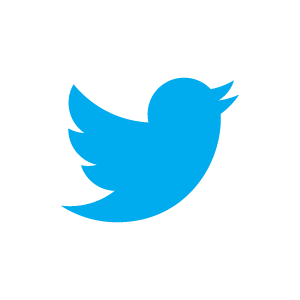
by MIMO Solutions | Internet Marketing, Social Media Explained, Social Networking
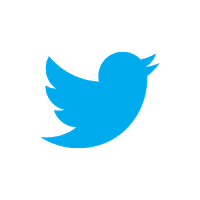
Twitter Explained for Business
Here is everything you need to know about Twitter for small business:
Twitter is an interesting social network designed to help you find out what’s happening, right now, with the people and organizations you care about. For small business, that means two things. You should use Twitter to keep track of news and new information about what’s happening in your industry. Plus, you should be using it to help people who care about you and your business keep up with what’s happening in your organization.
Twitter is all about the status updates, and limits posts to 140 characters. This means that you have to limit your posts to one sentence about what you are doing or would like to share with the world, right now. There are some cool tricks that you can use to share and connect a whole lot more than 1 sentence though, so keep reading for how to Tweet effectively.
Here are the advantages of Twitter explained, compared to other social networks:
- You don’t have to follow back. This is Twitter’s biggest advantage. Most social networking require you to connect both ways to socialize. However, on Twitter you can follow others or they can follow you and it does not have to be reciprocal.
- This is a big advantage for business and celebrities who would see millions of other people’s updates on Facebook or LinkedIn, but here they can be followed by many without following them.
- Twitter is rapid fire and it is socially acceptable to post a lot more often than other networks.
- Twitter has developed it’s own short hand and culture to take advantage of the 140 characters, so once you are in the club and figure it out, it can become a lot more powerful.
- It is a lot more mobile than other social networks. Since it is so short, it is easy to post from a phone or tablet, and many people use this aspect to their advantage.
- Hashtags or the # pound symbol was developed here to allow people to share on a common topic, so you can also search and follow news or social topics quickly.
- Speed is Twitter’s main advantage though, you can post or repost other people information with just a few clicks, and the short messages mean people can share news or updates very quickly.
 Getting started on Twitter Explained:
Getting started on Twitter Explained:
- Getting your profile set up is super easy. Again the main advantage of Twitter is the speed, and no other social network can compare with Twitter on this one. Sign up with your email address, pick a screen name and password, and upload a picture for yourself then you are pretty much ready to go.
- You should also immediately follow the favorites in your industry as well. The easiest way to gain followers on Twitter is post about or to some of the industry experts in you field. You also get to see what they are Tweeting and get an idea about what people want to hear.
- Don’t forget about #Hashtags. By putting a pound sign in front of a #Word or #PhraseBunchedTogether you can join the conversations about these topics, and others following those trends will begin to follow you.
- By putting the @ symbol before a person’s screen name, you send the message to them and all their followers. This is a good way to start a conversation with a specific person as well as get noticed in your industry, just don’t abuse it. Try it with me, and put @mikedmontague somewhere in your next Tweet to make sure you get it right. I will write you back and let you know I received it.
- Find other people and topics to follow by doing a search on Twitter. Twitter has a super fast search engine that only displays what has been posted on Twitter, so you won’t get normal Google looking results. They will be separated out into Tweets or People for you to follow.
- When you find someone interesting, just click the blue follow button to add them to the people you see when you log in. You can stop following people at any time, so try a bunch of people and then unfolllow people who post too much or not enough for you liking.
- Keep this in mind for your Tweets as well. The recommendation for frequency on Twitter is about 3-5 Tweets per day. Posting too much will monopolize people streams and they will unfollow you, and if you don’t post enough it is hard to get people’s attention to gain followers. In comparison, once a day is good for LinkedIn, and 1-3 times is good for Facebook and Google+.
- Tweets never expire, but the have a quick shelf-life. Your Tweets will be archived on Twitter forever so keep that in mind, but also consider how long they are relevant. Again, Twitter is all about speed and what is happening right now. Most Tweets only stay at the top of people’s feeds on their homepage for about 6-8 hours. After that, so much has happened and so many other people have posted that yours has slipped down the list and will likely never be seen unless someone goes to your profile page.
- Learn to Retweet interesting posts by other people. When you post a status update, it is called a Tweet. When you “like” or repost a Tweet by another person it is called Retweeting. Most people are familiar with “liking” on Facebook or LinkedIn. The action is similar on Twitter, but it is called Retweeting. You are basically just re-sharing their Tweet with your followers exactly like it what written. Look for the symbol looks like a recycle symbol that is vertical under anyone’s Tweet to Retweet them to your followers.
- If you really love a Tweet or want to save someone else’s Tweet to read later then you can Favorite it. By clicking on the star symbol under any Tweet you can save it to read later and let others know that you really loved it. This is called Favoriting a Tweet. You can go back to these Tweets from your profile page. This plays off the speed of Twitter. Since Tweets go stale in 6-8 hours, if there is a link or quote that you want to revisit in a few days or months, it will be hard to find unless you Favorite it. This should be the goal of every Tweet you write… Would someone favorite it and why? Note- People rarely do this, so don’t expect it, but there is no reason that can’t be a goal.
When you think Twitter think speed. What is happening, right now, that other people really need to know?
You may find it hard to write 3-5 Tweets per day as you get started, but I will give you trick. Most Twitter users will Retweet other people’s updates 2 or 3 times per day. So you can use other people’s updates for 3 of your posts. Then write one unique thought about a hot topic in your industry. Finally, share one post with a link to your website, and share what you want people to buy or participate in for your business.
So your Twitter posting schedule would look something like this:
- 8am- Retweet a post from people you follow that is the most interesting.
- Noon – Retweet another post then write one with the most important thing going on in your business or industry.
- 3pm – Share a link to your website and ask people to buy, share, or sign up for something.
- 7pm – Retweet another interesting post or quote from the day’s Tweets by other people.
Obviously, you don’t want to be too predictable for your followers and some people will be on at different parts of the day, so you will want to rotate when you do each of these throughout the course of the week. Keep it interesting and keep at it. Twitter has it’s own language and culture that you will learn over time, but this post will keep you from looking dumb in the meantime.
Twitter is very easy to use but if you have any questions, just email me and I will be happy to help.

by MIMO Solutions | goals, marketing, sales, social media, social media marketing, Social Networking
 |
| Having A Sales Mindset on Social Media Isn’t A Bad Thing! |
You might want to change your mindset about “sales” to be successful in your social networking online…
Chances are you have the wrong idea about “sales” as it relates to your behavior.
Most people are either deathly afraid of being considered a salespeople or too pushy, or they have no idea about what sales actually is and they are the one’s being to pushy.
So that’s the problem, about half of the people are too weak and the other half are too strong. It has always been a funny fact of life to me that about half of the population is afraid to do what they dislike in others, and the other half has no fear, but no filter either. This is especially true when it comes to the sales profession and what an actual professional salesperson looks like, sounds like, and behaves like.
Did you know that “sales” has been one of the most hated professions since is was officially created in the 1920’s? It is right up there with lawyers, politicians, and dentists every time they do the surveys. The most loved professions are things like teachers, clergy, and firefighters. These should come as no surprise to most people I would guess.
How many third graders do you think you would have to ask to get just one that said they wanted to grow up to be a “salesperson”? About a 1,000 is what we have come up with, you will find an occasional kid with the gift of gab and professional salesperson as a mother or father who is a strong role model for the child. The rest of us would rather be astronauts, doctors, and teachers.
However, do you happen to know what the most popular profession is in the United States? Surprise, it is “sales” with over 4.2 Million people performing the role, not including inside sales, waiters, or cashiers who all also happen to sell for their profession!
Last one, do you know what professional is a perennial contender for the highest paid profession? If you didn’t guess it, you need to pay better attention. Salesperson has almost always been in the top 5 highest paid professions since its inception. Now there are a lot of people making low wages as salespeople, so the average doesn’t come out in the top 10, but as far as top earners are concerned, salespeople come in right with CEOs, doctors, engineers and lawyers.
Why you might have the wrong idea about what professional salespeople do:
- Salespeople have a bad PR department. We take a bad rap in commercials, movies, and TV shows. We are associated with used-cars, polyester suits, and either the most pushy or most slick of our kind. Eventually, we need to get together and sell some marketing people to take on the task of changing our public image…
- Good salespeople make a lot of money. Did you notice the correlation above between the income of the most hated and most loved professions? The most hated generally rake in the dough, while the most loved are notoriously underpaid for what they do.
- There are a ton of bad salespeople out there. This one I will grant you. There are a ton of people doing it wrong. Hey, we have 4.2 Million salespeople out there; they can’t all be winners. People rarely talk about the good ones though. They silently propel companies and communities forward without being noticed.
It seems like our perception as a people of “sales” is bipolar. We love that people are willing to do it, we just don’t want to be one, and we don’t want them calling on us. We will gladly pay salespeople large sums of money for what they do, but then run and hide with our phones turned off if they are being paid by someone else.
People hate to be sold, but they love to buy!
In order to have the best of both worlds, to make sales and make friends, it takes a special mindset and a balance of the good, the bad, and the ugly aspects of sales.
What can you do to make sure you have the right sales mindset when you are on social media sites?
To me, great salespeople are like great waiters and your favorite restaurant. This is the sales mindset you should have on social media.
- You want to compliment the experience not force or artificially create it.
- You want to make suggestions about ideas that will enhance the experience.
- You want to be likable as a person and a company, and create an atmosphere that compliments your brand.
- You want to listen and anticipate the needs of your audience.
- You want to solve problems and make sure the customer is happy.
- You want to encourage your customers to try new offerings.
- You want to use your expertise to point the customers to the right solution for them.
- You want to welcome new guests and explain why people love you and why they made a good choice to check you out.
- You want to have fun and promote an environment that matches the customers expectations.
- You want to let them know when things have an up charge or will take longer to receive.
- You want to make sure they understand their purchase if people make common mistakes.
- You want to make sure they are 100% satisfied with the experience before you deliver the bill.
- You want to clean up after there messes if they make a mistake with your product or service.
- Finally, you encourage them to spread the word if they liked the experience, or ask for feedback if they did not.
All of those things a waiter does well, are the exact same things that will help you grow your business on social media sites, and create a raving fan base of loyal customers, who refer you often. Some people call it customer service, some people call it marketing, some people proudly call it sales. It really doesn’t matter, but those things that make a waiter great, are the same things that make salespeople great.
They create an atmosphere and environment which allows the customer to buy, while the salesperson stays out of the way.
Some, so called sales and marketing gurus, will tell you that this means the salesperson is unnecessary. That could not be further from the truth. Please don’t think that you can use marketing automation, can the salespeople, and still create that kind of environment.
There is a reason that a drive-through, fast food experience is different than being served by a great waiter who helps create a memorable experience. It is called “salesmanship” and it results from interpersonal communication and treating each person like the individual that they are.
You cannot substitute information and automation for interpersonal communication and expect the same results!
Don’t be afraid of being a salesperson, be afraid of not selling anything or not serving your customers the way you want and they deserve. Learn how to develop a sales mindset appropriate for social media and create the experience you would want when dealing with your company.



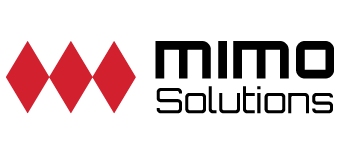








 Getting started on Twitter Explained:
Getting started on Twitter Explained:
